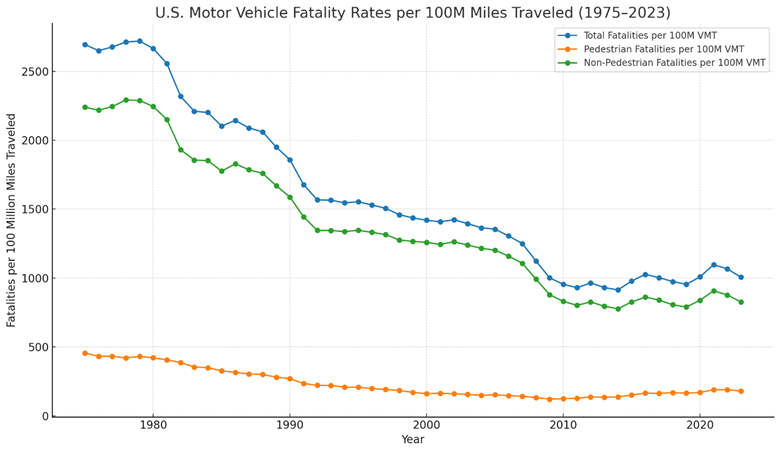MGA Research Expands into Advanced Driver Assistance System (ADAS) Testing
Oct 23, 2025

In a recent article, we discussed the importance of passive pedestrian protection testing as it relates to a shifting focus in automotive safety. Global mobility trends from urbanization and quieter EVs are driving pedestrian fatalities upward, which, in turn, drives a heightened focus in the expansion of active safety.
As vehicles are redesigned to become more advanced, there is an urgency to advance technology that protects occupants before potential collisions occur. This segment will focus on active safety testing and how MGA continues to support the growing needs of the industry with technological advances.

What is ADAS and Active Safety?
In short, active safety refers to a broad category of vehicle safety systems that are intended to prevent accidents from occurring. This category includes ADAS, or Advanced Driver Assistance Systems, which utilize advanced software and hardware packages to help drivers with tasks like steering, braking, and providing potential collision warnings.
Unlike passive systems, which focus on injury outcomes once impact occurs, active systems rely on advanced sensors and algorithms to intervene before an accident scenario occurs. These technologies represent a shift from mitigating harm to actively avoiding it.
Why does Active Safety matter?
Traffic accidents remain a leading cause of death and severe injury around the world. In the US, motor vehicle fatality rates have been approaching stagnation since 2010, and worse, pedestrian injury and fatalities are on the rise. A quick look at the stats:

Federal Highway Administration (FHWA), Highway Statistics Series: Annual Vehicle Miles Traveled, U.S. Department of Transportation.
- Pedestrians’ fatalities on US roadways have increased 78% since 2009
- 80% of pedestrian injuries and deaths occur at night or in other low visibility scenarios
- Research from the Insurance Institute for Highway Safety (IIHS) estimates that a reduction in crash velocity to 15 mph reduces pedestrian risk of severe injury to 11% or less
- Approximately 8% of fatal crashes were a result of distracted driving in 2023
As vehicles become increasingly automated, automakers and regulatory bodies are steadily increasing their focus on crash severity reduction and complete crash prevention. ADAS plays a critical role in preventing and reducing the severity of crash events, improving vehicle safety for both occupants and Vulnerable Road Users (VRU).

Advanced features allow OEMs to design vehicles that can assist drivers in crash avoidance. Some of these features include:
- Automatic Emergency Braking (AEB) / Crash Imminent Braking
- Forward Collision Warning (FCW)
- Lane Keeping Assist (LKA)
- Blind Spot Detection (BSD)
- Adaptive Cruise Control (ACC)
Active Safety Testing at MGA
MGA is pleased to announce the expansion of capabilities to support ADAS testing. The investment complements our long-standing history as an innovative partner in passive safety testing services, bridging traditional crashworthiness expertise with the rapidly expanding world of active safety and automation. Testing is now available at key partner proving grounds across the United States, supporting IIHS and custom test scenarios in a phased approach:
PHASE 1: IIHS Development and Self-Submission – Immediate support for IIHS Forward Collision and Pedestrian AEB Protocols
PHASE 2 : U.S NCAP and FMVSS Readiness – Positioning for upcoming government protocols and potential star-rating influence.
To inquire about our new ADAS capabilities, contact us at www.mgaresearch.com/contact. We look forward to working with you.

Ready to Get Started?
Let's discuss your testing needs and how MGA can help. Our team is ready to provide the expertise and solutions you're looking for.
